The Schtick
The Brewers Project is a rather clever idea whichever way you look at it. Ostensibly it is a collaboration between the brewers and the archivist to recreate beers of long ago. However I am guessing that it was cleverly orchestrated by the marketing department who knew exactly the products they wanted – not that it is a bad thing at all. Full marks for identifying a gap in the market and using unique heritage to exploit it. It gives the brewers some fun times to play with real beer making in the pilot brewery instead of pressing buttons in the main brewhouse. It gives Guinness a chance to use their tremendous heritage and archive to best effect.
Porter and then ‘stout porter’ were the precursors of the stouts we know nowadays. After starting with ales, Guinness moved on to making porters. Early on there was a ‘town porter’ and a ‘country porter’. The country porter as its name suggests was the product shipped outside Dublin. It had more hops to preserve the beer over a longer time and, certainly once the products were exported, a higher alcoholic strength for the same reason.
To provide a counterpoint for this review, it’s also time to introduce Intoxicated Shep, he’s a brewer, so might be expected to know more about these things than me. But in his own words,
Intoxicated Shep says, having been asked to give my considered opinion on Guinness’s foray into, let’s call it the more artisan end of the beer drinking spectrum, I’ve thought back to what and how people are reviewing on various websites and social media. From “Nom, nom, nom” on Untappd, “A juicy banger” on Twitter and even recently “sexy sticky black and smells of vanilla laced treacle tart and patchouli oil”, which certainly isn’t on Mark Dredge’s crafty craft wheel of beer flavour or any wheel of beer flavour for that matter. As a child of the 80’s I have little idea what patchouli oil is, never mind what it tastes like (Can you drink patchouli oil? Ed: They will only serve it in thirds I believe). I know what sticky black is though, and what it tastes like. So this is going to be a straight down the line “say what you see” describing the organoleptic experience and maybe try to explain why, from a, dare I say, technical point of view.
The Beers
Dublin Porter , ABV 3.8%, available in bottles and keg.
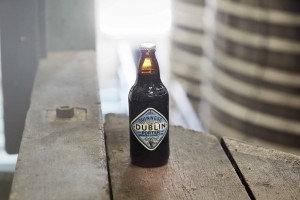 Intoxicated Rich says, I decided to compare the bottle with a bottle of Guinness Original, so far so sensible. Then I made the noob mistake of having them in the fridge too long. Both beers improved dramatically as they warmed up, below, say 10oC, they have little character. Immediately the difference is in the head. The Dublin Porter had large quickly dispersed bubbles, not a traditional Guinness head (which will hold some volatiles nicely). The mouthfeel also reflected a highly carbonated product. Quite sweet and more biscuit than really toasty, I found this a simple pleasant beer. ‘Guinness Lite’? By contrast the Guinness Original had a crisper initial flavour, much bigger mouthfeel and altogether a more satisfying mouthful.
Intoxicated Rich says, I decided to compare the bottle with a bottle of Guinness Original, so far so sensible. Then I made the noob mistake of having them in the fridge too long. Both beers improved dramatically as they warmed up, below, say 10oC, they have little character. Immediately the difference is in the head. The Dublin Porter had large quickly dispersed bubbles, not a traditional Guinness head (which will hold some volatiles nicely). The mouthfeel also reflected a highly carbonated product. Quite sweet and more biscuit than really toasty, I found this a simple pleasant beer. ‘Guinness Lite’? By contrast the Guinness Original had a crisper initial flavour, much bigger mouthfeel and altogether a more satisfying mouthful.
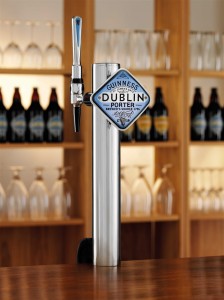 NB: At the launch I also tried the keg version. A much better head and could see this as being a pleasant session porter in its own right. And it also makes a great adult cream soda when topped with a Guinness ice cream float!
NB: At the launch I also tried the keg version. A much better head and could see this as being a pleasant session porter in its own right. And it also makes a great adult cream soda when topped with a Guinness ice cream float!
Intoxicated Shep says, , pours frothy, loose head and has a faint aroma of roasted malt and very little else , if pushed, a little toffee. On taste, there’s very little sweetness, not much malt character, thin and leaves a drying astringency, I’m searching for more things to describe, to adjectivise, but I can’t.
In their press release, Guinness informed us that this beer was “fermented at a high temperature”, the dryness and lack of any roasty-toasty body is a symptom of this, the fermentation has been vigorous and probably too long, using up any residual sugar from the insufficient malt bill and giving birth to a beer that in the grand scheme of things is like a warm Diet Coke.
West Indies Porter, ABV 6.0% available in bottles only.
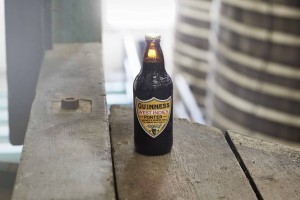 Intoxicated Rich says, I compared this with two versions of Guinness Foreign Extra Stout (FES), Dublin and Nigeria bottled versions. These weigh in at a hefty 7.5% ABV. They had a brief chill but they were much happier at room temperature than a few degrees below. All had a proper head, the WIP creamy and the FES more capuccino coloured. For aroma the Nigerian FES won hands down with great volatiles, but the head was quickest to dissipate. So, tasting the WIP it is a lovely smooth drink delivering toffee and slightly chocolate notes. All good until you try the Dublin FES, my favourite Guinness incarnation. A big boozy start, then bitter, then deep, complex and lingering – all in harmonious balance. Somewhat reminiscent of Nwankwo Kanu the Nigerian version flattered to deceive with it’s lovely aroma, proving to be altogether thinner and less complex – albeit still with the same boozy whack upfront.
Intoxicated Rich says, I compared this with two versions of Guinness Foreign Extra Stout (FES), Dublin and Nigeria bottled versions. These weigh in at a hefty 7.5% ABV. They had a brief chill but they were much happier at room temperature than a few degrees below. All had a proper head, the WIP creamy and the FES more capuccino coloured. For aroma the Nigerian FES won hands down with great volatiles, but the head was quickest to dissipate. So, tasting the WIP it is a lovely smooth drink delivering toffee and slightly chocolate notes. All good until you try the Dublin FES, my favourite Guinness incarnation. A big boozy start, then bitter, then deep, complex and lingering – all in harmonious balance. Somewhat reminiscent of Nwankwo Kanu the Nigerian version flattered to deceive with it’s lovely aroma, proving to be altogether thinner and less complex – albeit still with the same boozy whack upfront.
Intoxicated Shep says, this seems a bit more serious, darker, thicker with a moussy head and a waft of dark fruit and chocolate. As expected, this is sweeter, (lactose sweet) and fuller than it’s poor cousin, the bitterness comes from the roasted malt, perhaps a hint of spice, smoke and a pleasant tangy linger. Not the travesty I thought it would be and for 6% in your local shops, not a bad fallback. Just for the record I had an FES too, …dark, boozy rum, molasses aroma. Very thick, lots of body, fruity sweet, coffee, chocolate, spice, a little bit of alcohol burn but smooth and delicious.
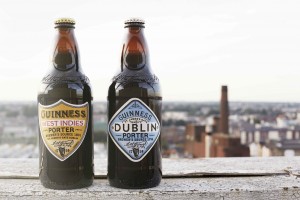 Was it fair to compare these porters with their stout brothers? Probably not. Both the style and the age of the recipe are the precursors to the stouts so the stouts certainly should be ‘better’ in some respects. But enough wittering from us for a moment,
Was it fair to compare these porters with their stout brothers? Probably not. Both the style and the age of the recipe are the precursors to the stouts so the stouts certainly should be ‘better’ in some respects. But enough wittering from us for a moment,
What will they think of them?
Dublin Porter
The beer geek – doesn’t drink 3.8% session porters
The old bloke in the pub – the 3.8% will appeal, crisper than a mild, different from a bitter, not as full on as a Guinness, he might like the keg version.
The girls night out – my feeling (having never been on a girls night out) is that if they want Guinness, they’d order Guinness
The supermarket bottle drinker – a bit boring to sit with by yourself at home? Nice label though.
The ‘interested’ drinker – it’s the back story that attracts and would be a must on any comparative tasting
West Indies Porter
The beer geek – might have fun working out the differences between this and FES but will come with a dose of big brewery scepticism, will end up preferring the FES
The old bloke in the pub – doesn’t always want the volume, sat by the inglenook on a winter’s evening with a bottle of this, nice.
The girls night out – sharing cool looking bottles of this might appeal
The supermarket bottle drinker – want a stronger ‘sipping beer’? This hits the spot.
The ‘interested’ drinker – worth trying but probably a stepping stone to FES
And I haven’t talked about food pairing. Do try WIP with a sticky toffee pudding.
To sum up…
Unlike some new beers I can see a place and an appeal for these beers. They are not ‘me-too’ beers or for ‘me-too’ markets. They fit nicely with Guinness existing range and aren’t a knee jerk reaction to go off on a ‘crafty double IPA’ tangent that would be out of character (Greene King take note). There is no serious aim here to try for the ‘craft’/beer geek/Hackney Hipster market, what they want is pub goers and home drinkers to have a new alternative with a great story behind it.
Disclosure: I was invited to a launch of these beers and asked if I would write about them
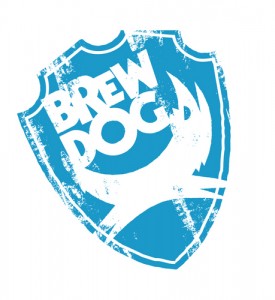 Probably not, the ultra-slick commercial juggernaut that is BrewDog will continue to make more and more money. Oh sorry, you mean its latest marketing gimmick, I mean beer, Born To Die.
Probably not, the ultra-slick commercial juggernaut that is BrewDog will continue to make more and more money. Oh sorry, you mean its latest marketing gimmick, I mean beer, Born To Die.

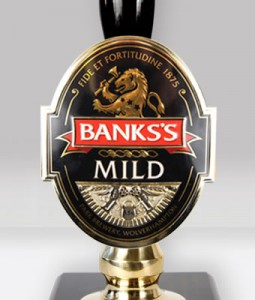
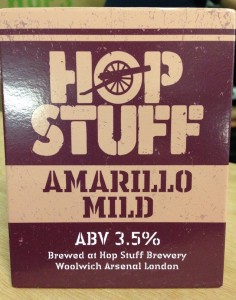

![GUINNESS GOLDEN ALE BOTTLE [HI] half](http://intoxicated.me.uk/wp-content/uploads/2015/03/GUINNESS-GOLDEN-ALE-BOTTLE-HI-half-134x300.jpg)





